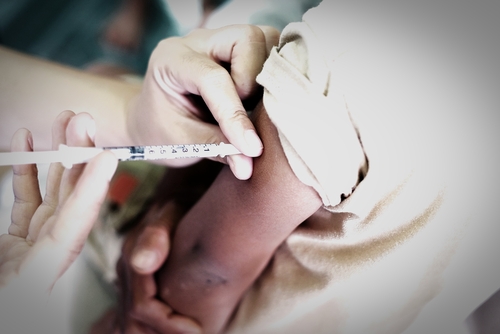On this day in history, February 23rd 1954, a group of children from Arsenal Elementary School in Pittsburgh, Pennsylvania, receive the first injections of the new polio vaccine developed by Dr. Jonas Salk.
Though not as devastating as the plague or influenza, poliomyelitis was a highly contagious disease that emerged in terrifying outbreaks and seemed impossible to stop. In the late 1940s, the March of Dimes, a grassroots organization founded with President Roosevelt’s help to find a way to defend against polio, enlisted Dr. Jonas Salk, head of the Virus Research Lab at the University of Pittsburgh.
After mass inoculations began in 1954, everyone marveled at the high success rate–some 60-70 percent–until the vaccine caused a sudden outbreak of some 200 cases. After it was determined that the cases were all caused by one faulty batch of the vaccine, production standards were improved, and by August 1955 some 4 million shots had been given. Cases of polio in the U.S. dropped from 14,647 in 1955 to 5,894 in 1956, and by 1959 some 90 other countries were using Salk’s vaccine.


